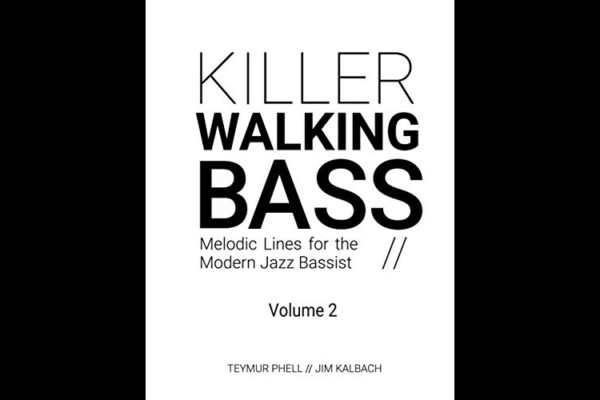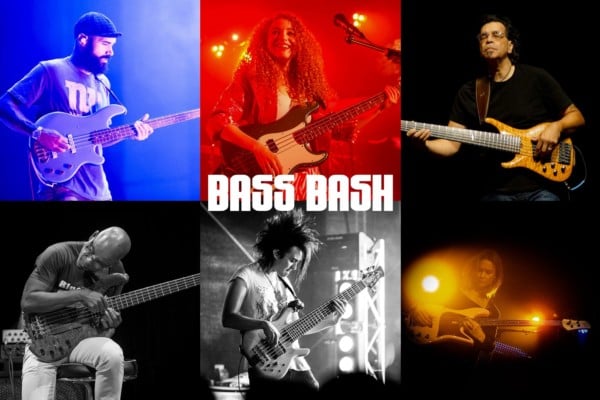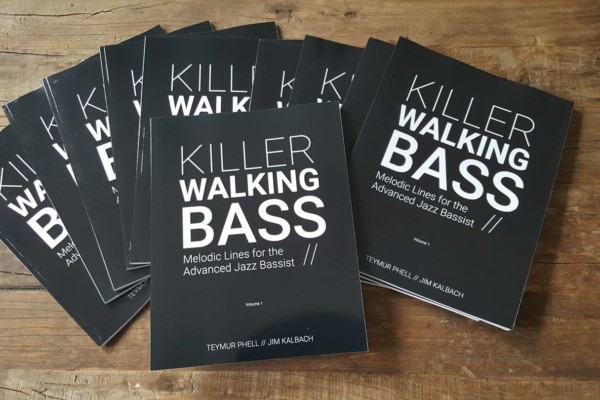Master Volume: An Interview with Teymur Phell
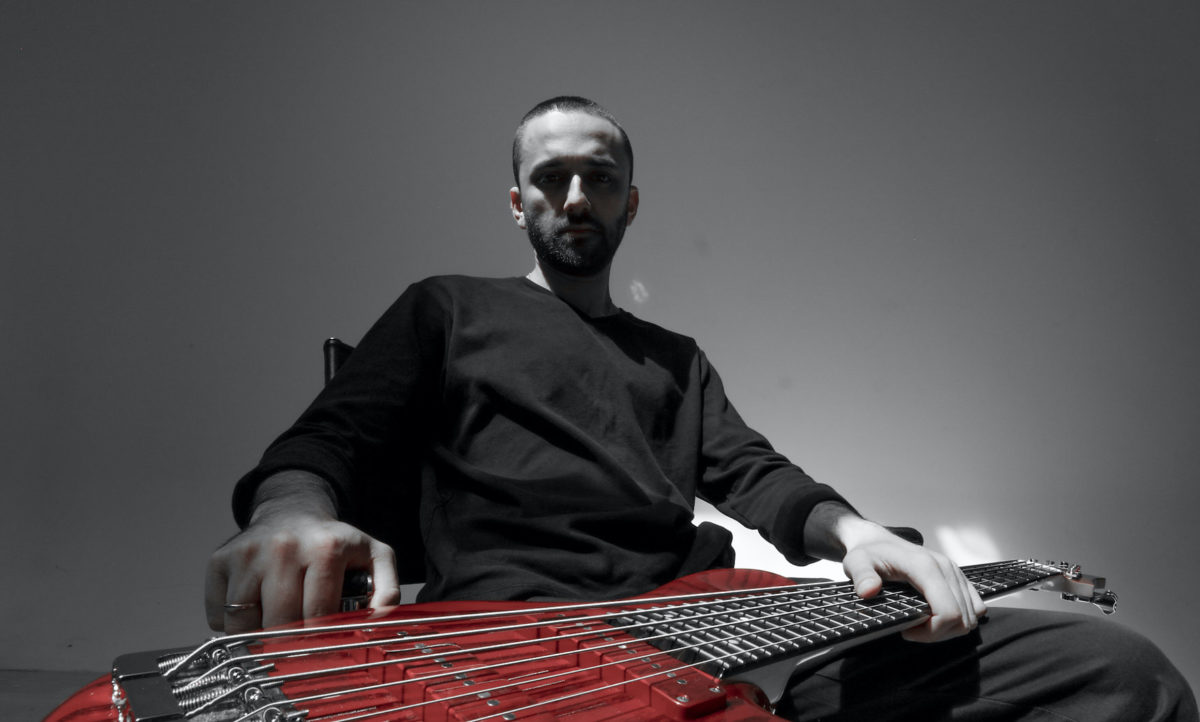
Teymur Phell has worked with a long list of the top musicians in jazz: Arturo Sandoval, Mike Stern, Leni Stern, Bill Evans, Randy Brecker, Simon Phillips, and Oz Noy, just to name a few. Now he’s put his monster chops to use for his own music with his debut solo album, Master Volume.
Born in Azerbaijan and raised in Israel, Phell grew up in an extremely musical home that led to a diverse interest in genres. That’s reflected in his compositions with tastes jazz, funk, fusion, and world music. You’ll also hear the influences of beloved bass heroes. Though he never took lessons on the electric bass, his father gave him instructional videos from John Patitucci and Jaco Pastorius.
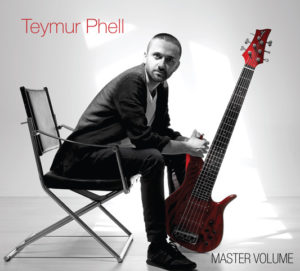 Master Volume starts with a bang on “Zero to Sixty”, a blistering bass melody that is sure to grab your attention. Overall the album has a natural ebb and flow from the heavy groove of “Papano Kimono,” featuring Mike Stern and Dennis Chambers, to the modern and funky title track to the straight-ahead closer, “Blues For Who?” (Phell is also joined by his old bandmates Stern and Chambers on “Unfinished Business.”) Every player on the album offers an astounding performance, with some standout moments from saxophonist Chad Lefkowitz Brown. Two tracks – “Old Window” and “Heyvanhana” – see Phell paring things down to just the bass. It’s easy to tell this will be a must-have album for bassists for years to come.
Master Volume starts with a bang on “Zero to Sixty”, a blistering bass melody that is sure to grab your attention. Overall the album has a natural ebb and flow from the heavy groove of “Papano Kimono,” featuring Mike Stern and Dennis Chambers, to the modern and funky title track to the straight-ahead closer, “Blues For Who?” (Phell is also joined by his old bandmates Stern and Chambers on “Unfinished Business.”) Every player on the album offers an astounding performance, with some standout moments from saxophonist Chad Lefkowitz Brown. Two tracks – “Old Window” and “Heyvanhana” – see Phell paring things down to just the bass. It’s easy to tell this will be a must-have album for bassists for years to come.
Master Volume is available today. Phell has an album release show on tonight at the Made in New York Jazz Bar in Brooklyn. We caught up with Phell to get the scoop on the album, how he swings on electric bass, and what technique stuck with him from a bass legend.
You’ve said that this was the album you always wanted to make. How so?
I always wanted to make a powerful debut album, but every time I wanted to do it I felt my level of composition wasn’t matching my playing skills. I felt like I had some catching up to do, so I took a few years to sit down and write lots of music. I also produced a lot of music for singers and other musicians at that time, so I got a lot of experience just writing a lot. During those years I feel like I developed my compositional chops. I never studied composition, but I always knew what it was supposed to be like and what I wanted to hear. When I felt like my compositional level and playing level were even, that’s when I started to record the album. I didn’t want to rush it. I want to look at this album in 20 years and still feel like it’s good music.
Also, you can hear there are different styles and a lot of influences [throughout]. There is a lot of style from Azerbaijan, where I was born, and Eastern Turkish sounds. Bringing that together with the jazz, funk, and fusion also made it something I’ve always wanted to do. I wanted to jam-pack everything that I like into one album.
When I listened to the first track, I heard some other influences, too. Did I hear a quote from Jaco’s “Continuum”?
Oh yeah, you got it right and I’ll tell you why. My dad got me the original Jaco Pastorius CD, and you know as soon as you hit play you’re blown away. That’s how I wanted my opening track to be – hit play and you’re instantly in it. It made me think of that Jaco album so I wanted to throw in a Jaco quote.
Do you feel you take anything specific from Jaco’s playing?
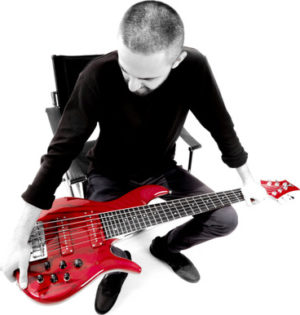 Yes. The first thing I got was from Modern Electric Bass, when he said that you really have to play on the frets. Jerry Jemmott asked him if he practiced fretless or fretted and he said when he’s practicing fretted, he plays only over the frets and never in between. When you learn to do that, your hand position is much more clear. You only have one place to teach your hands to go. I don’t have a huge hand, but that also helps you stretch your hand when you play one finger per fret. It’s a mechanical approach, not a musical approach. Once your hands have it, you can extract music out of it. Also, just the sound. Getting a good tone [from playing over the back pickup] is big.
Yes. The first thing I got was from Modern Electric Bass, when he said that you really have to play on the frets. Jerry Jemmott asked him if he practiced fretless or fretted and he said when he’s practicing fretted, he plays only over the frets and never in between. When you learn to do that, your hand position is much more clear. You only have one place to teach your hands to go. I don’t have a huge hand, but that also helps you stretch your hand when you play one finger per fret. It’s a mechanical approach, not a musical approach. Once your hands have it, you can extract music out of it. Also, just the sound. Getting a good tone [from playing over the back pickup] is big.
So you stick around that back pickup?
Yeah, when you want to go fast, but when I walk I’ll set the blend more toward the back pickup and play more over the end of the fretboard for an uprighty sound.
Traditional jazz groups turn their nose up at walking bass on electric, but you make it work. What tips do you have for making the electric bass swing?
A lot of people say you can’t do it, but you can if you do it right. Sometimes I even prefer the swing of the electric bass in a piano trio. As long as it’s swinging, it’s swinging. Paraphrasing John Lennon, “Give me a goddamn tuba and I’ll figure it out.”
So if you have a two-pickup bass, set it to a blend of 70% bridge pickup and 30% neck pickup. But with your hand, keep it around the end of the fingerboard. The combination gives you that uprighty sound.
The other thing that makes it not swing for a lot of people is adding a lot of [ornamentation] to your lines. I tell students to do the Marcus Miller palm mute and pluck with your thumb. If the bass line is interesting enough, melodic enough, and your time is really good, then you can do without all the extra eighth notes and triplets and stuff. That’s it. Learn to do that, and then you can add later on.
There was a track I really liked called Heyvanhana. It sounds like all bass with little hand percussion, and it almost sounds like a puzzle. Could you talk about that?
It’s basically all in 9/8. Sometimes when I write, it comes from a melody in my head or a chord progression. For this one, I was just playing a bass line groove that came to me. I started messing around with it and put the chords on it that matched the hits in the bass line. After I had that, I got rid of the bass line [for the intro] and just had the hits with the chords. So in the beginning, you can’t really tell what’s going on and as it continues it clarifies itself. The way it’s built, there are a lot of major 7ths, but it’s all happening low. It’s a melody and a groove at the same time.
For the really high part, I just found a way to do that rhythm guitar kind of thing. I didn’t want to hire a rhythm guitar player just for that, so I had to do it myself.
How do you decide when to use the bass for the melody? Do you write mostly from bass or piano?
It’s half and half. For “Unfinished Business” and “Papano Kimono,” I knew that Dennis and Mike would be playing on them. I wrote those tunes for that band. The name “Unfinished Business” came because last year I stopped playing with Mike after playing with him straight for 8 years.
There’s a lot of depth to your tone on the new album. How did you record it?

Some of the tunes were direct. I really like the [Universal Audio] Apollo interface. I just used my F Bass and the Apollo with very simple plugins to get the tone like on the opening track, “Zero to Sixty.” For a lot of the bass lines, I like to record them with the amp as well. I’ll have a microphone on a Markbass amp plus an Avalon DI going into the board. If I’m just recording at home, I just use the Apollo.
Do you feel like adding the amp adds a little oomph to the bass lines?
I feel like I get a little more of that low, low-end frequency that the DI might miss, or the fatter sense of room that a mic gives. It just kind of fills it in.
Who is “Blues for Who” written for?
It was for a guitar player that I used to play with a lot, especially in New York. He said we needed to play something new, so on the way to the gig, I wrote it on a piece of paper. At the gig, he couldn’t read it so it was a disaster. Every time we had a gig after that, I’d ask him if he learned the song. It’s easy and he never learned it, even though I named it after him. I said, “If you don’t learn it for the next gig, I’m taking your name off of it.” So I did.
That’s the most straight-ahead tune.
It’s like a little blanket to tuck you in to go to bed after you’ve heard the whole record. It’s a pleasant way to go way.
I liked the way that you built up the feel from very loose into a walk.
That’s the way we’d play it live, we just did it in the studio. No over-dubbing or anything. Some of the other songs have dubs, obviously, because there are two bass parts. I always record the leads afterward because I like to record the bass lines first with the band. It makes it feel better with the drums.
What else is coming up for you?
After the album release show, I’m working on putting together a summer tour. I’ve been on the road with a lot of bands, so I got to know a lot of the people and places to play in Europe. I’ve always wanted to have my own band, but it’s hard. I think I want to do a little more teaching as well.
I’m writing a new book now. It’s going to be called “Chop Builders.” It will cover some of the things we talked about, so a lot of it will be more technical than musical. It’s more about getting your hands to a point where there are no more obstacles. Then you just have to learn music. I want to bring you to a point where there will be no more technical problems. If you do it right, you should be able to play the most advanced lines.
Master Volume Track List:
- Zero to Sixty
- Papano Kimono
- Old Window
- Master Volume
- Worth the Wait
- Unfinished Business
- Heyvanhana
- Sweet Sweep
- Chances Are
- Blues for Who?

